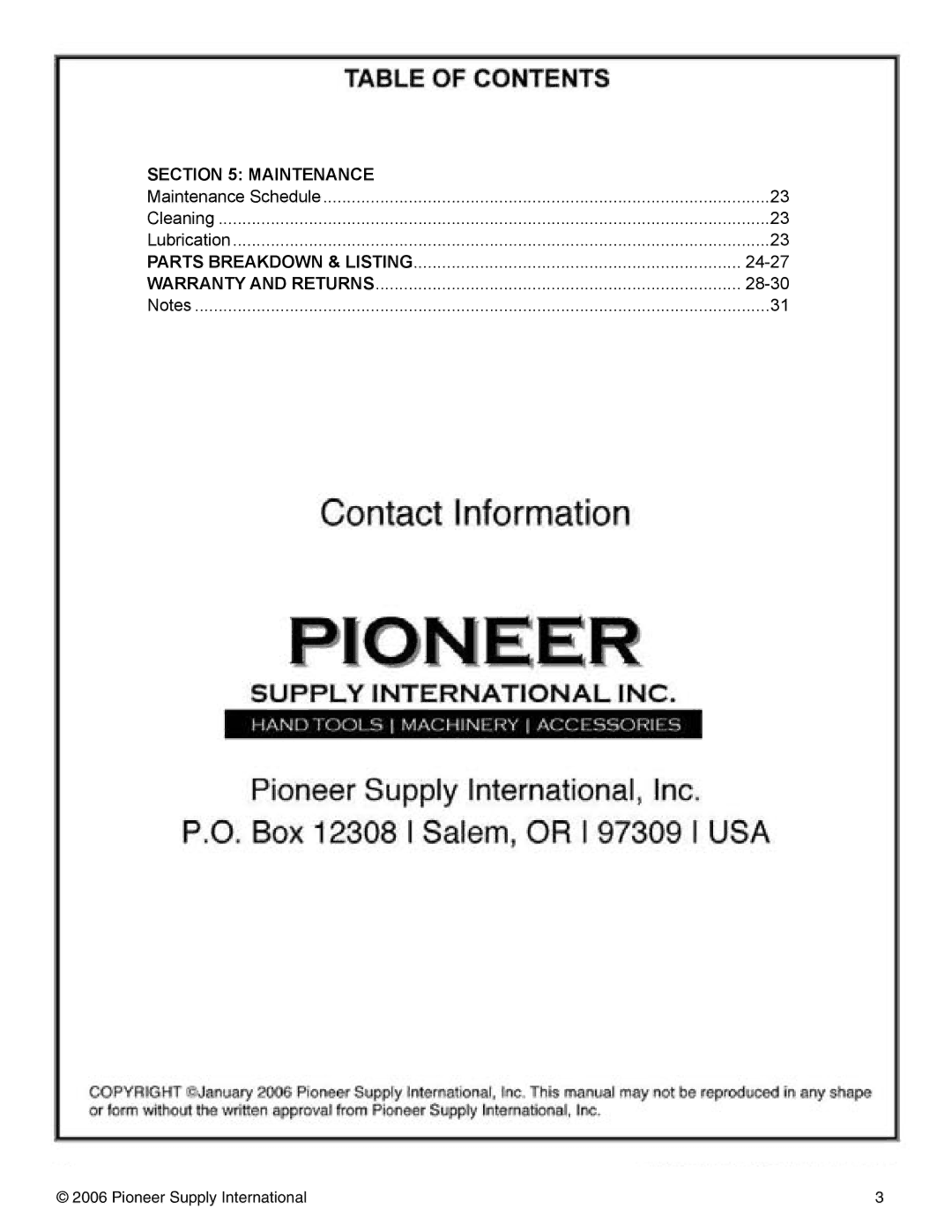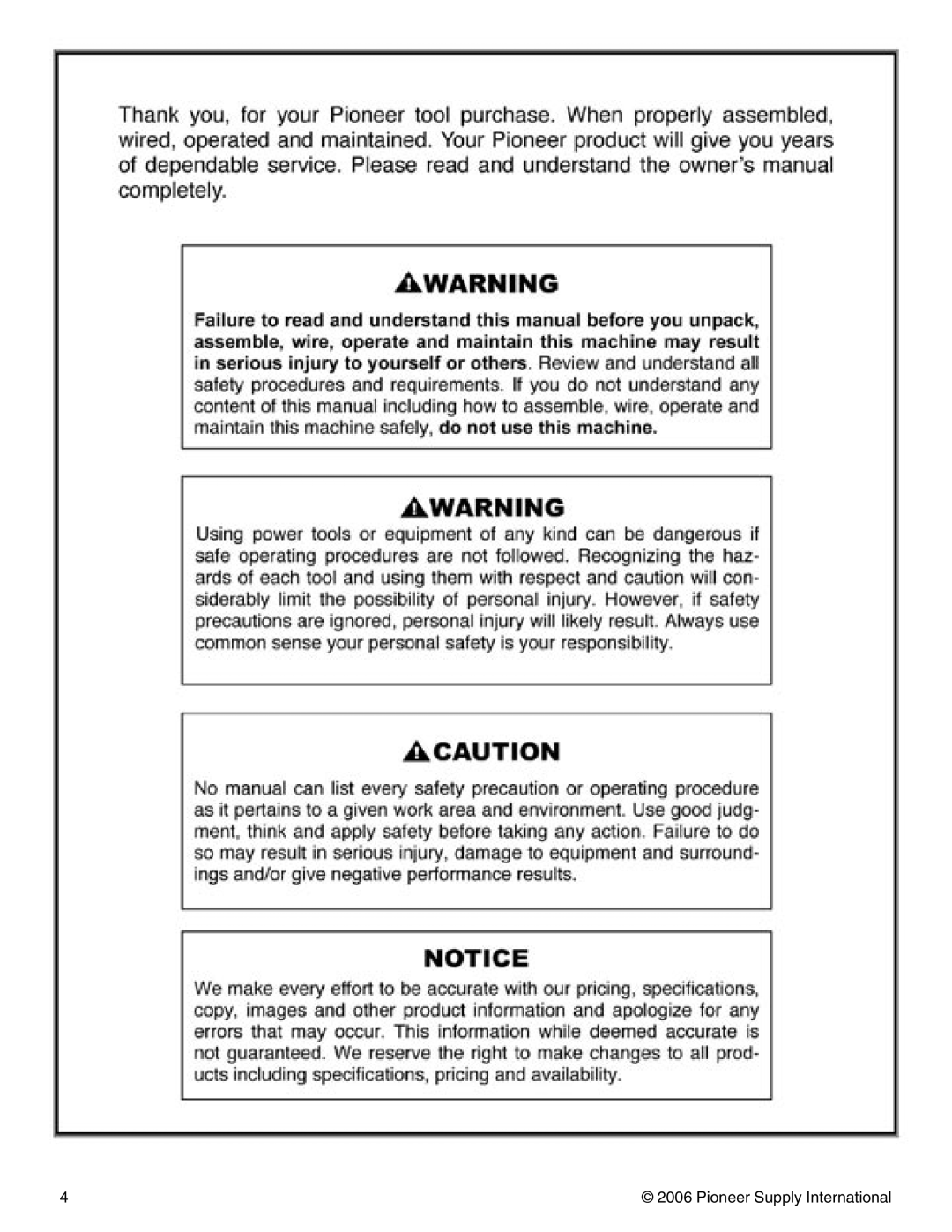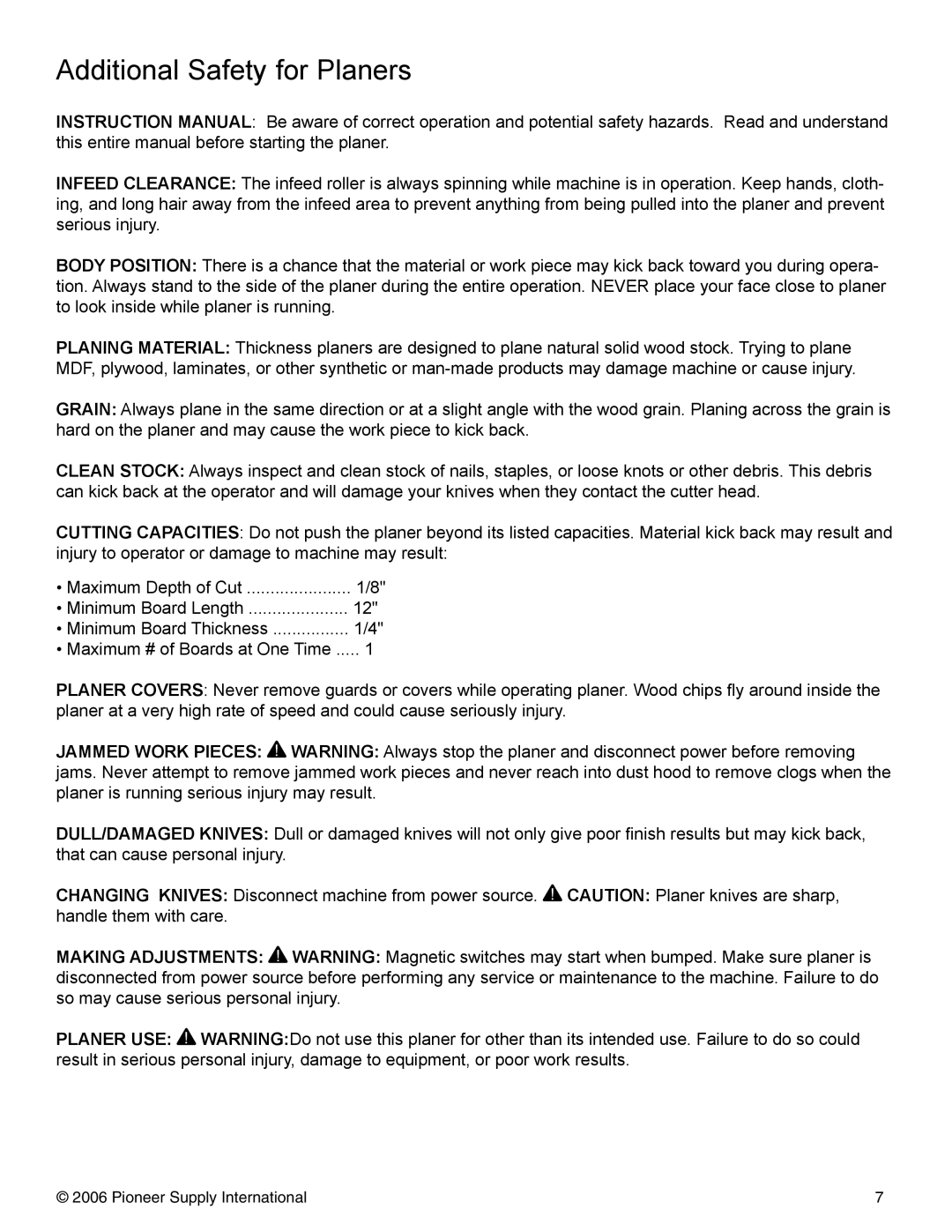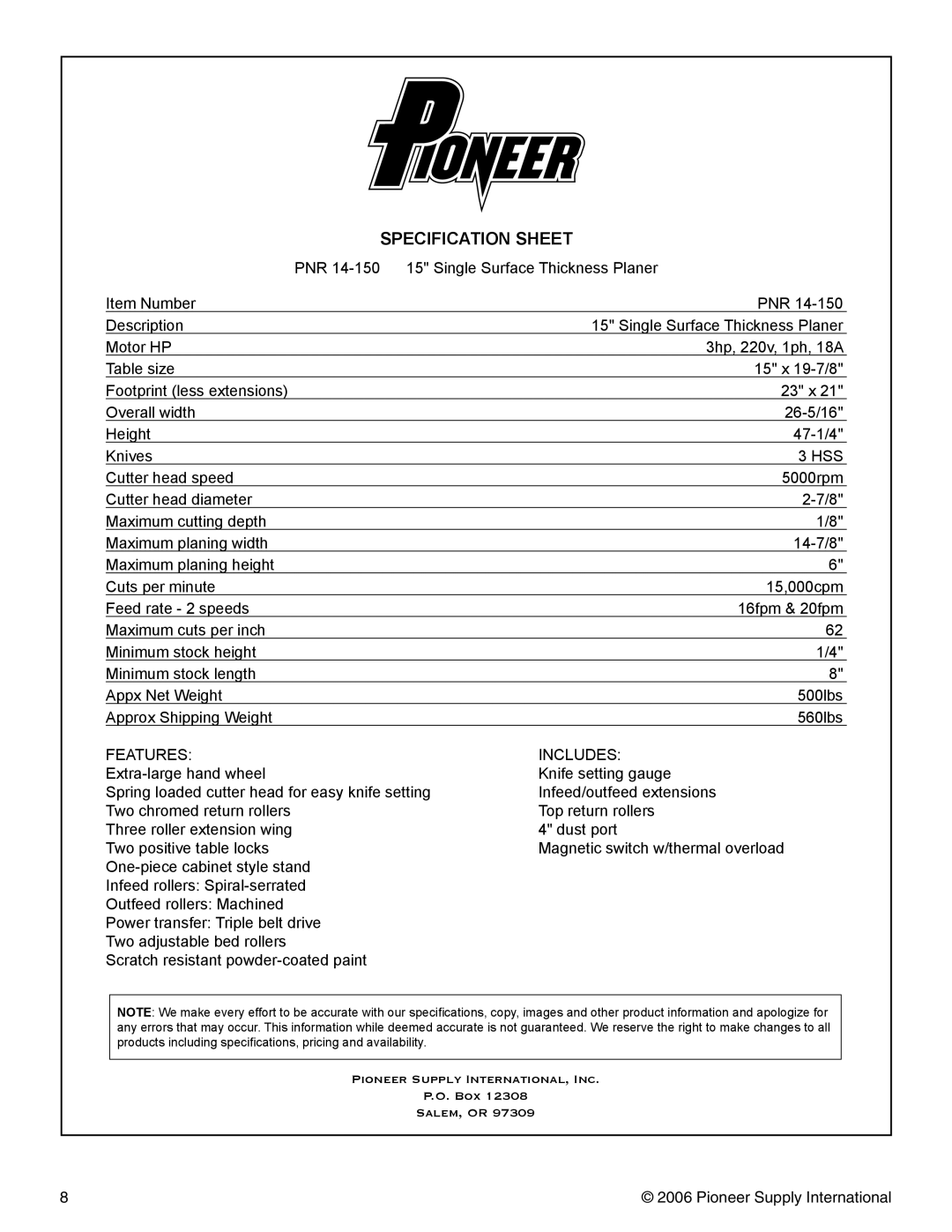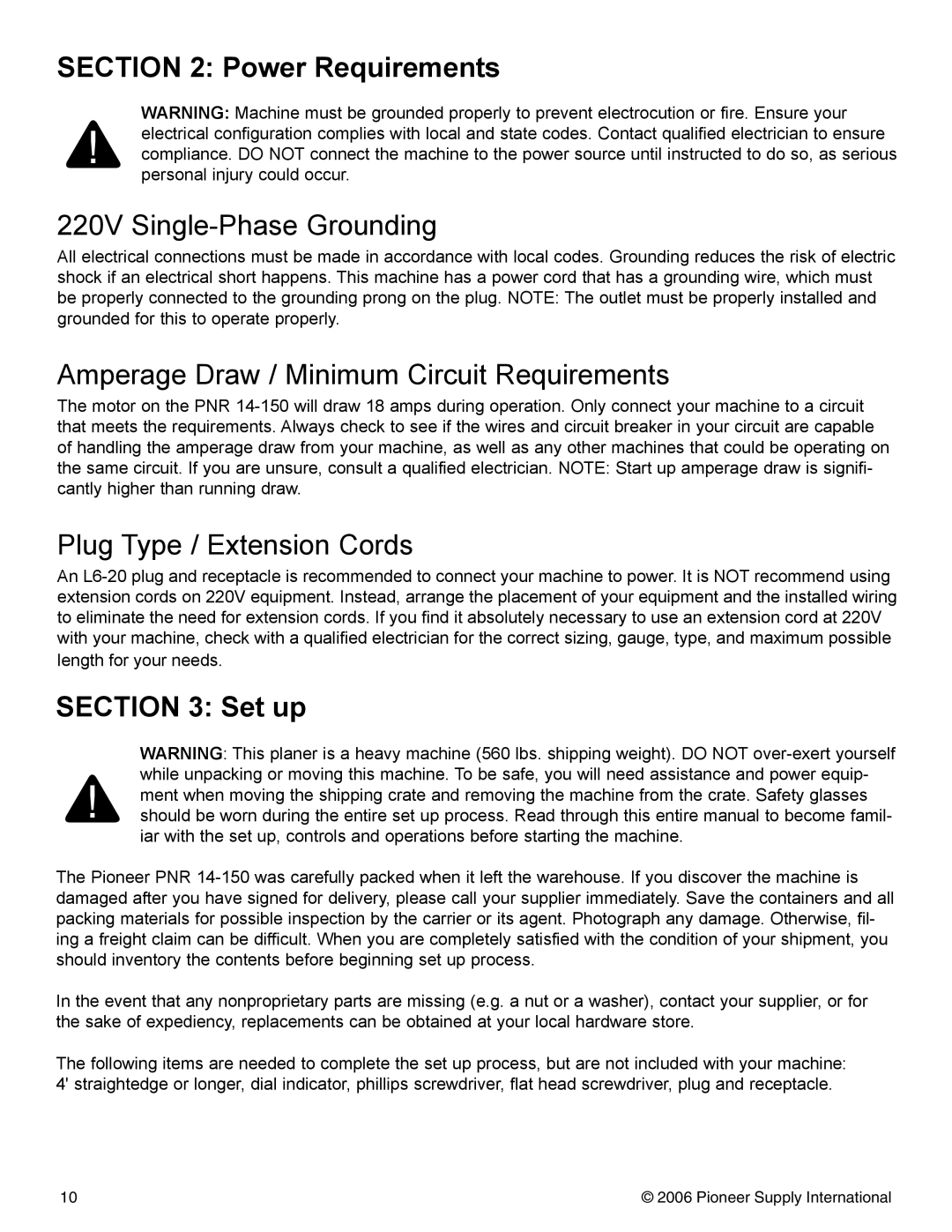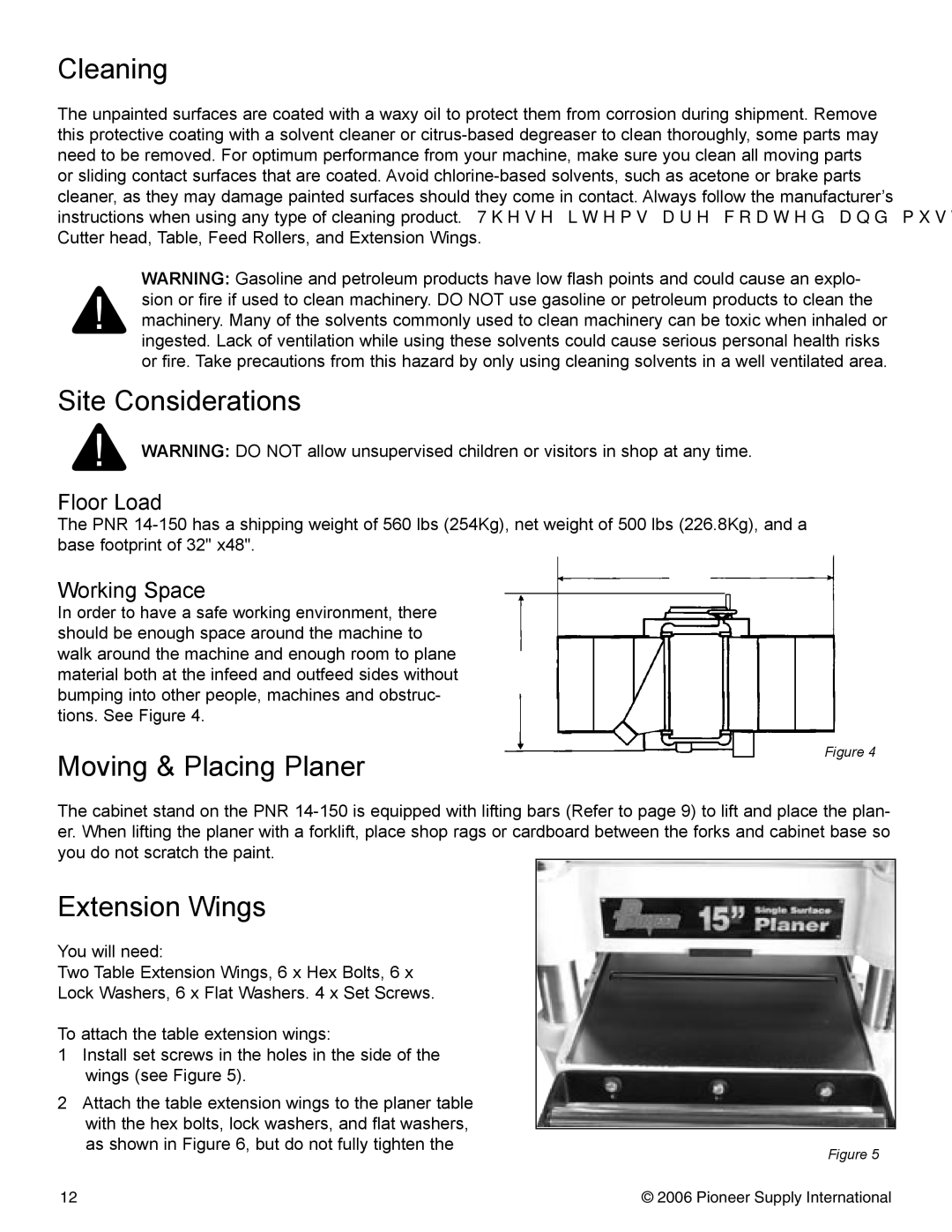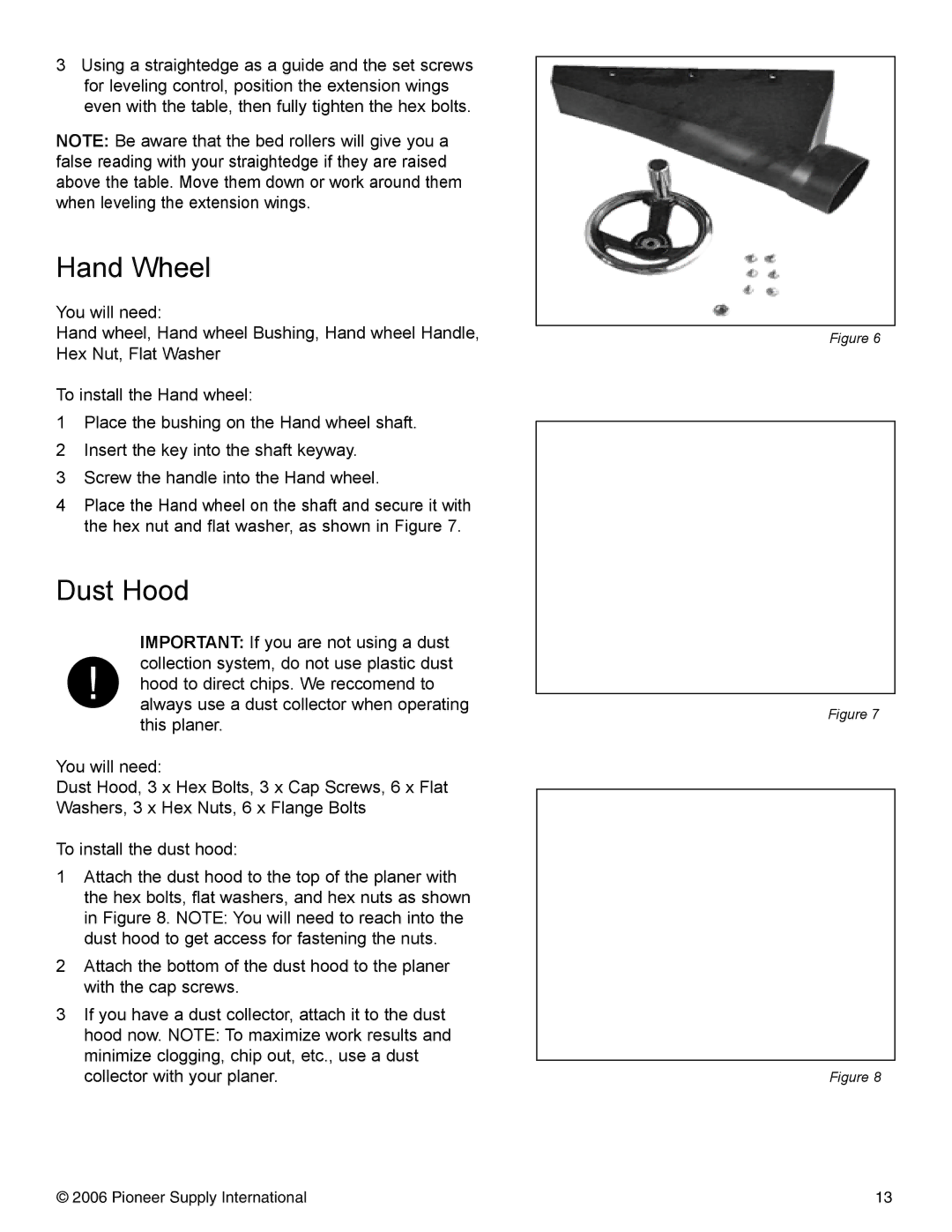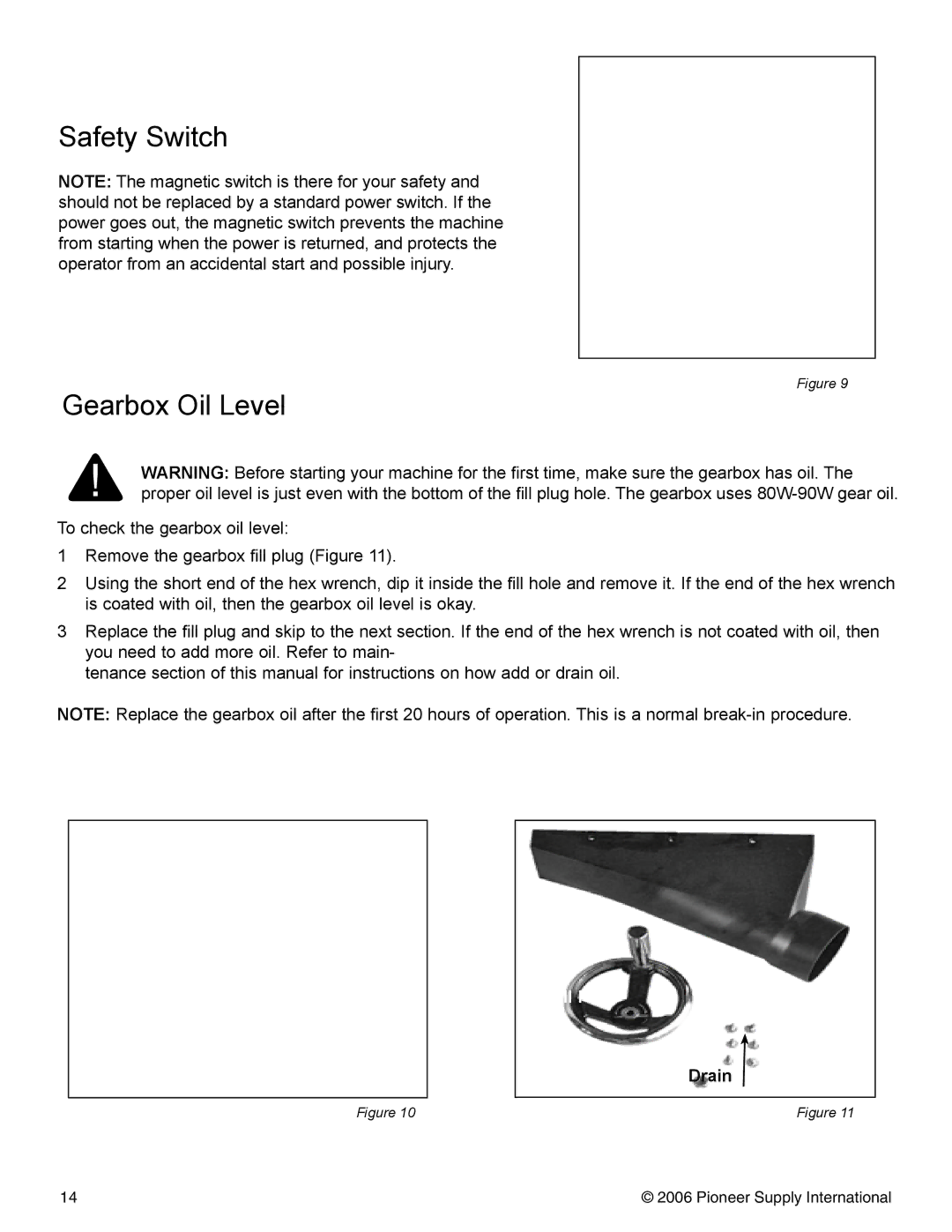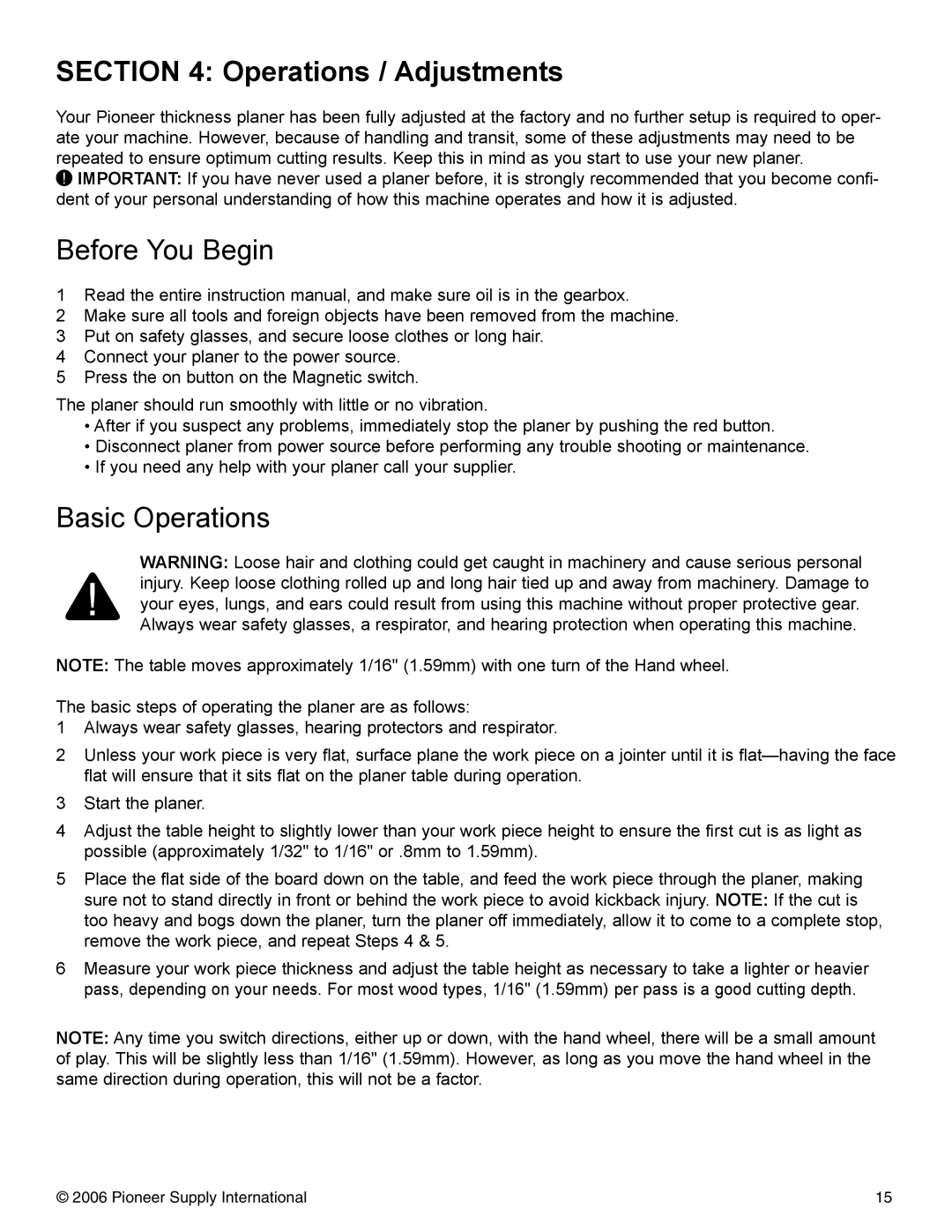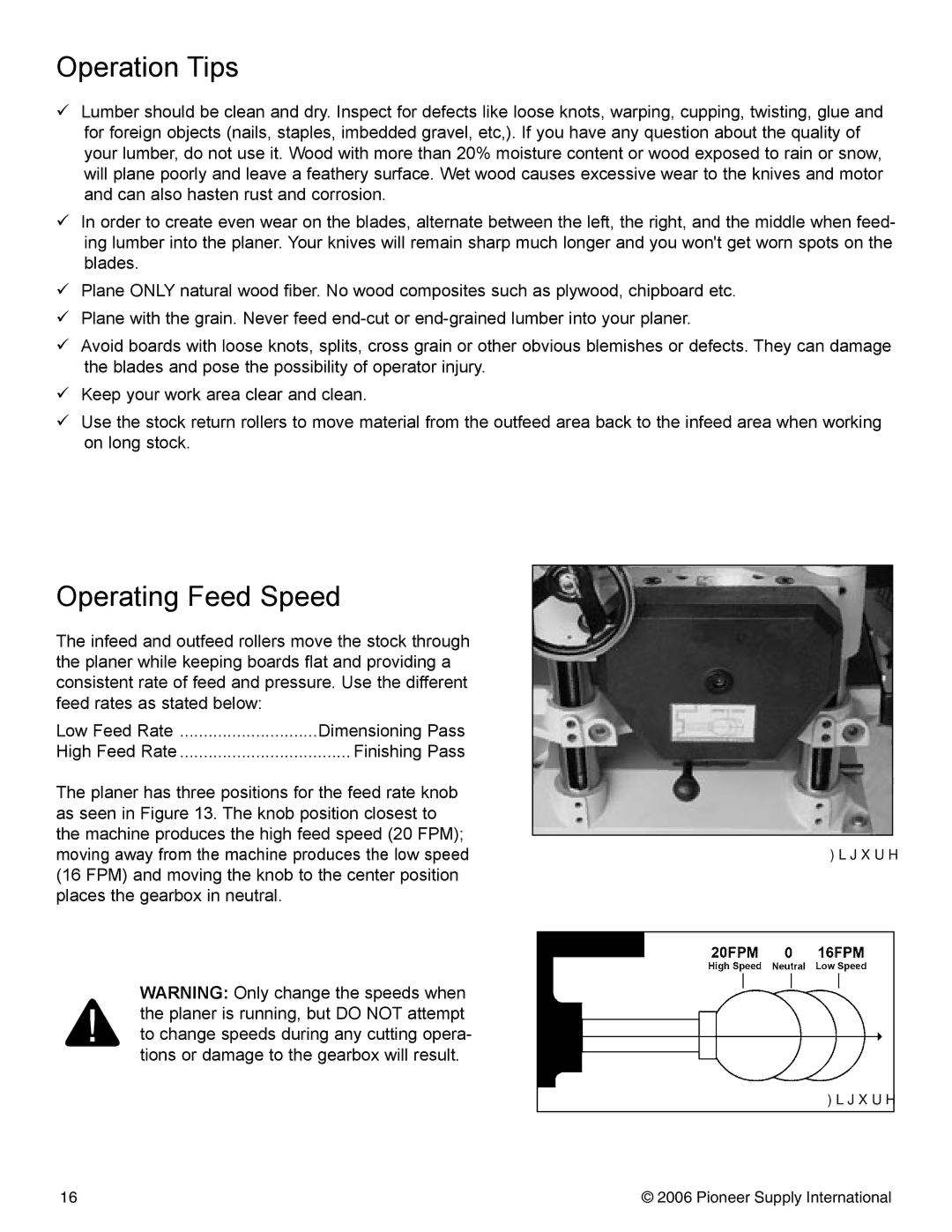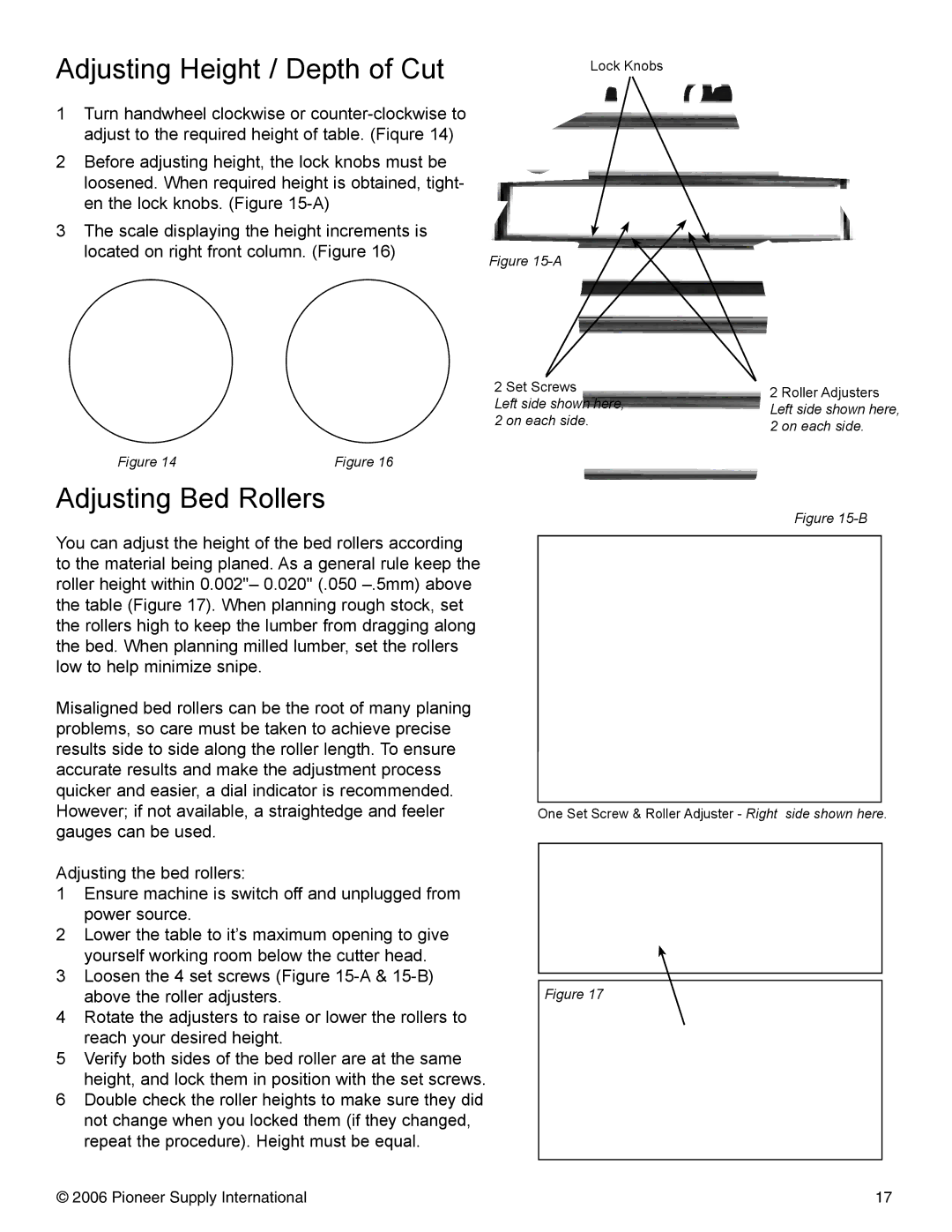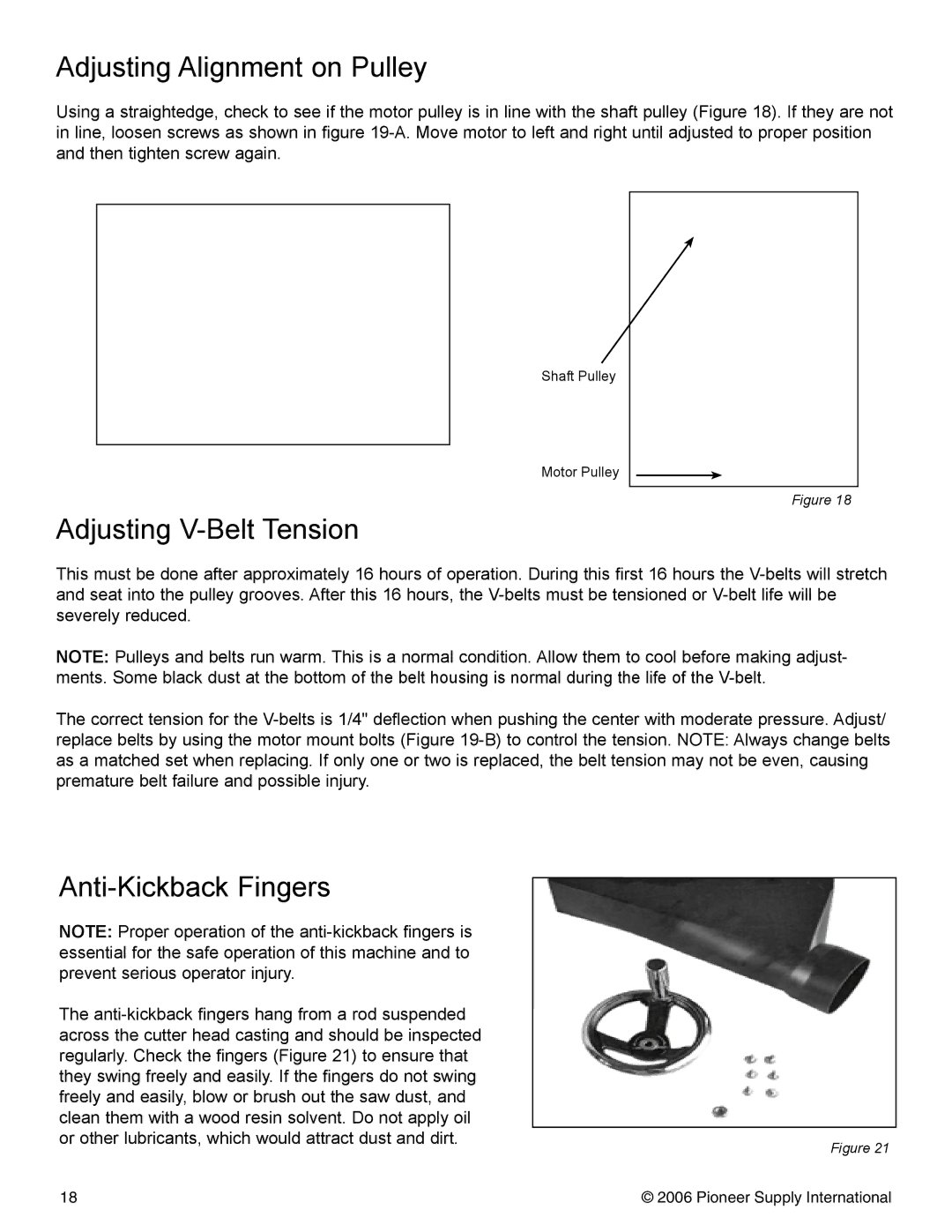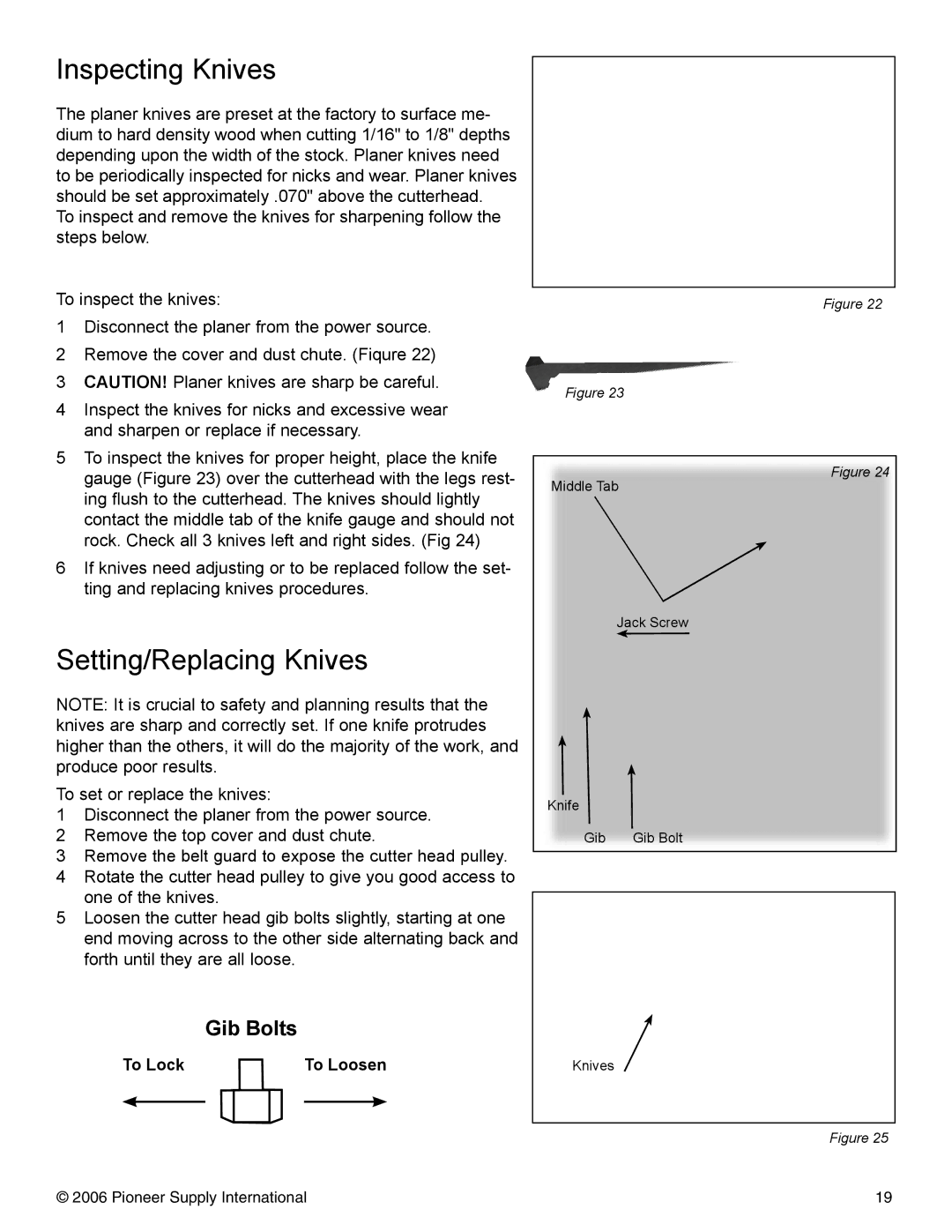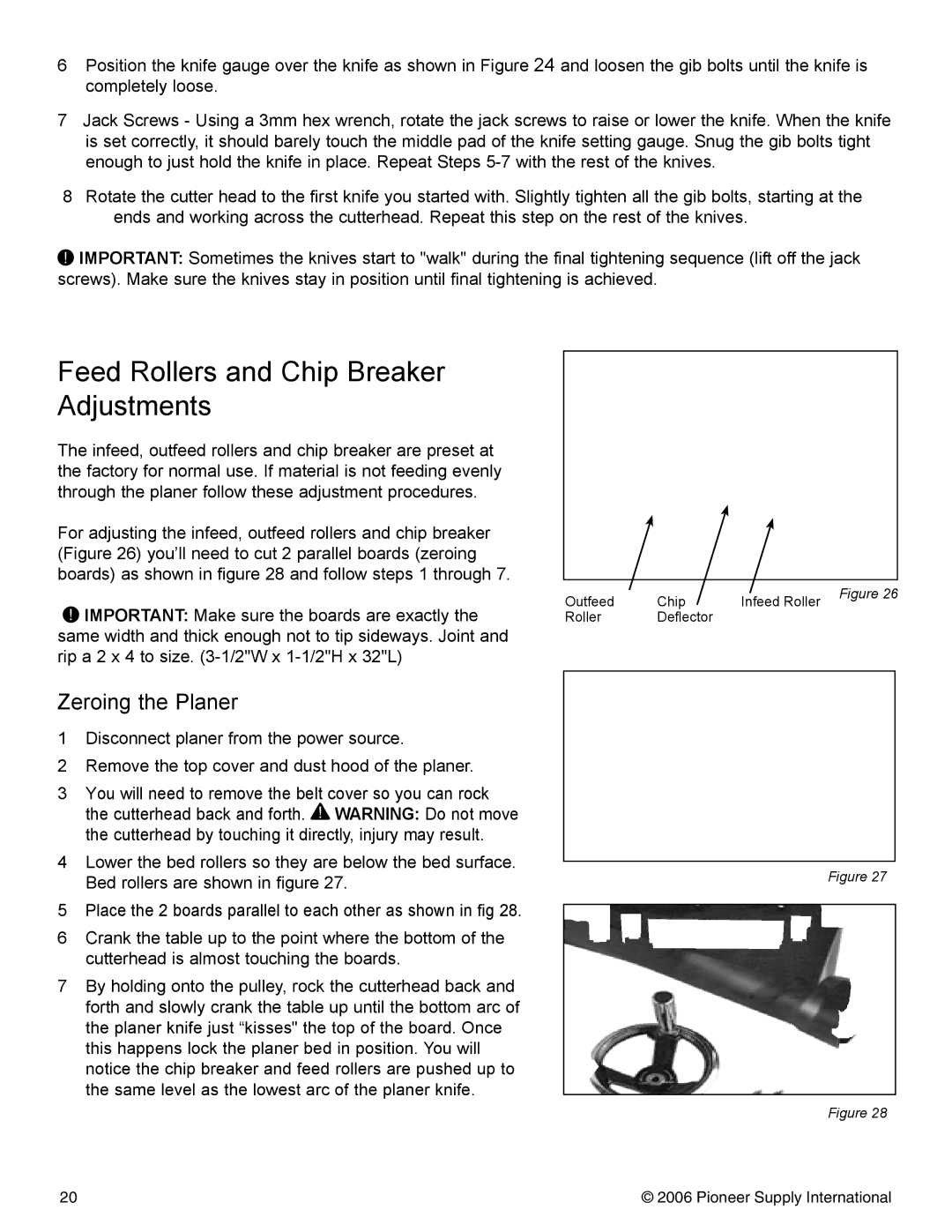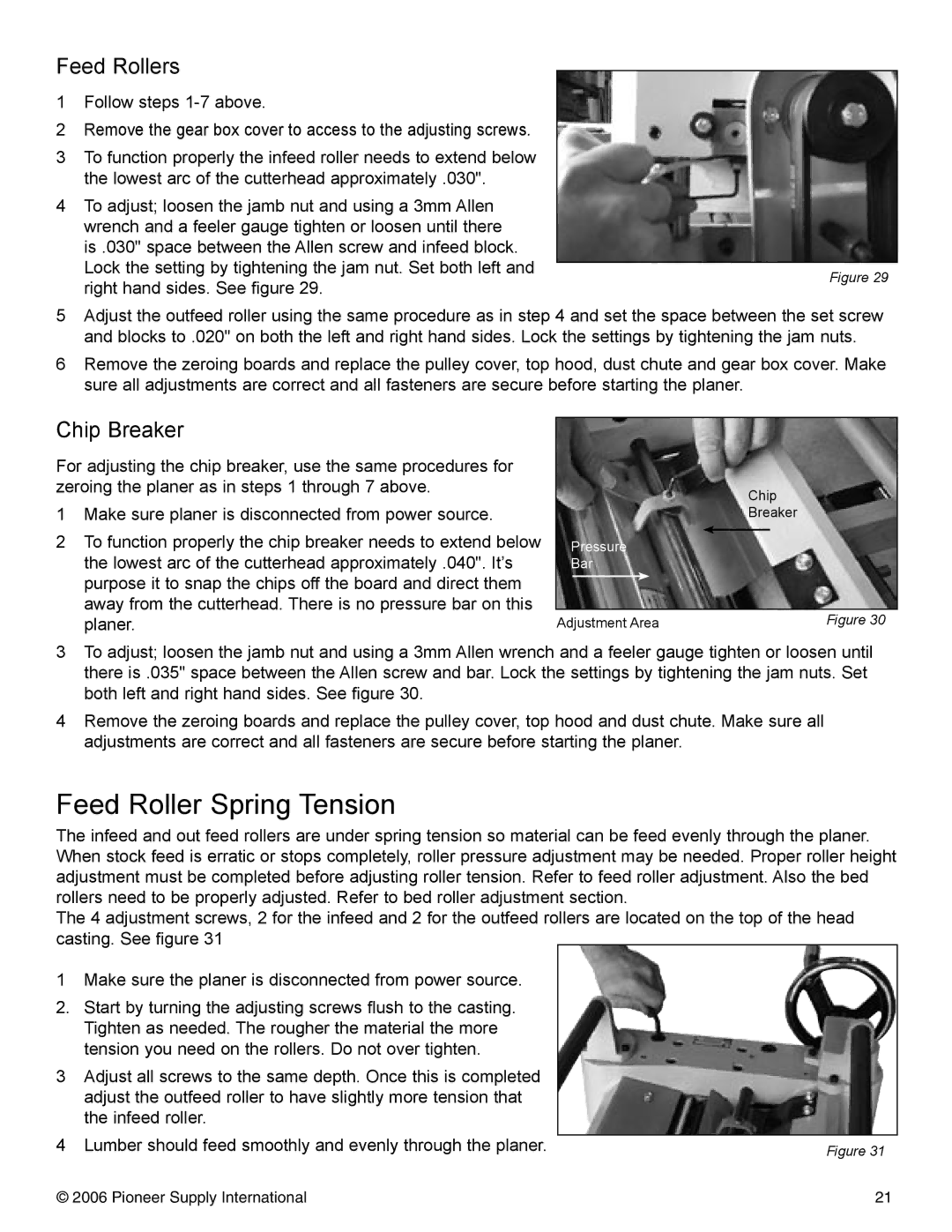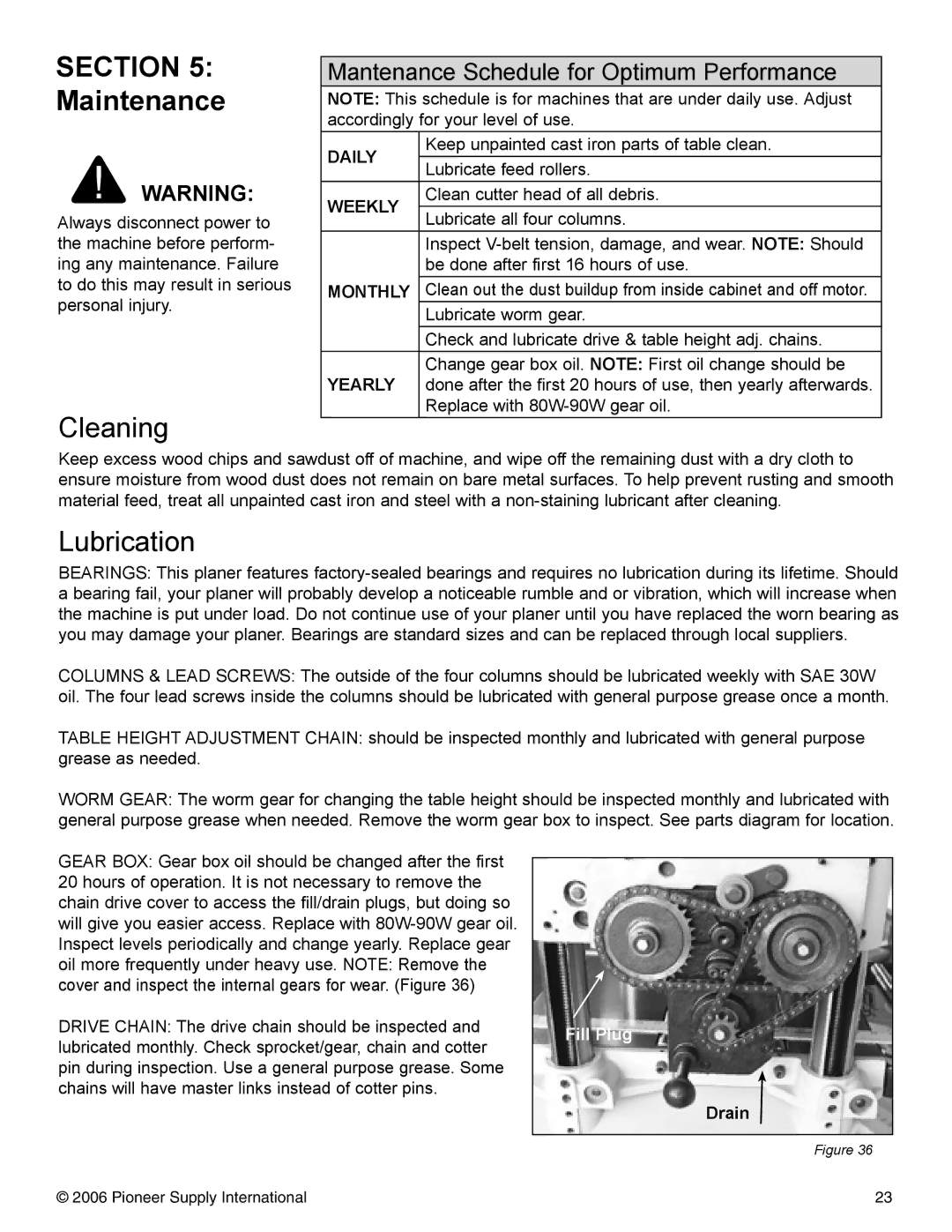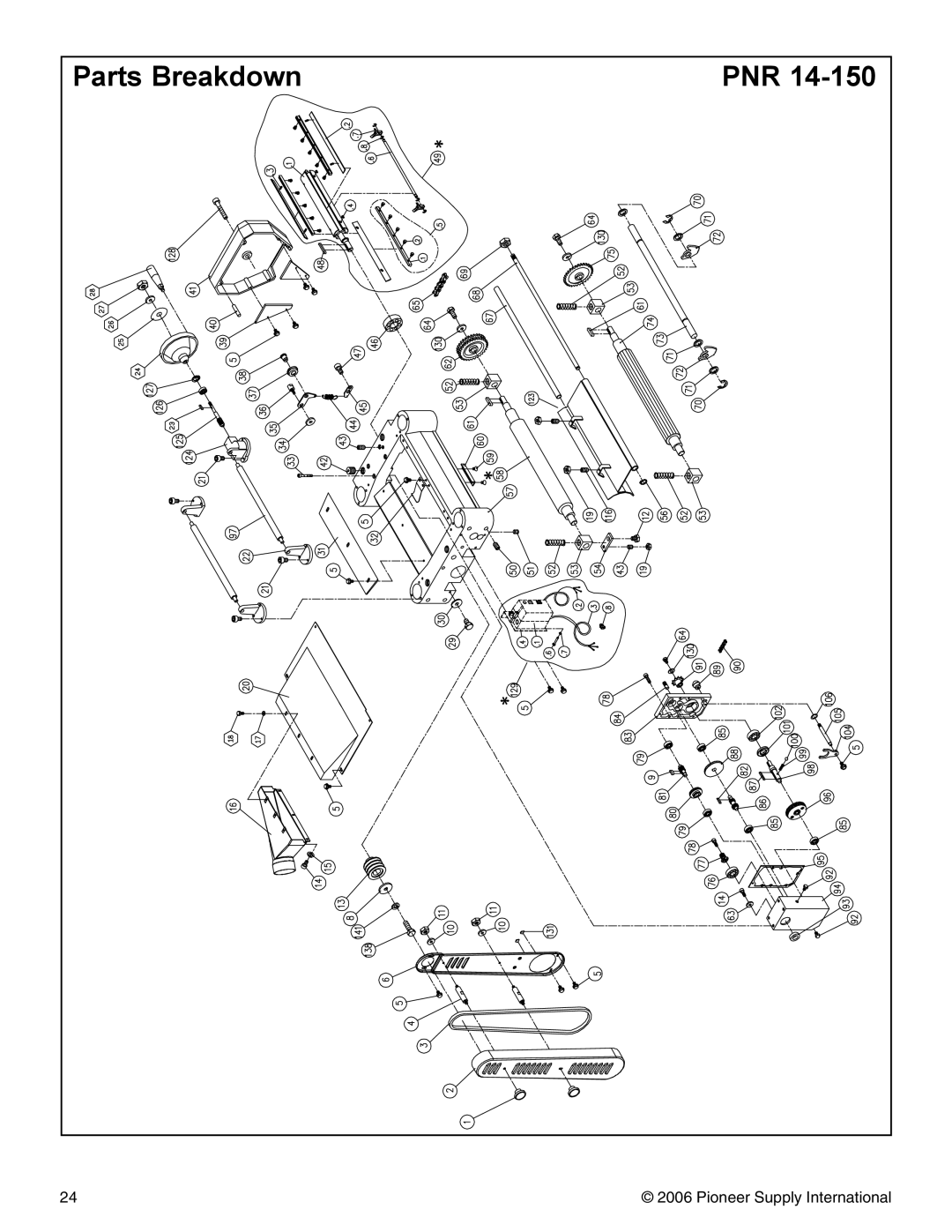
SECTION 4: Operations / Adjustments
Your Pioneer thickness planer has been fully adjusted at the factory and no further setup is required to oper- ate your machine. However, because of handling and transit, some of these adjustments may need to be repeated to ensure optimum cutting results. Keep this in mind as you start to use your new planer.
!IMPORTANT: If you have never used a planer before, it is strongly recommended that you become confi- dent of your personal understanding of how this machine operates and how it is adjusted.
Before You Begin
1Read the entire instruction manual, and make sure oil is in the gearbox.
2Make sure all tools and foreign objects have been removed from the machine.
3 Put on safety glasses, and secure loose clothes or long hair. 4 Connect your planer to the power source.
5 Press the on button on the Magnetic switch.
The planer should run smoothly with little or no vibration.
•After if you suspect any problems, immediately stop the planer by pushing the red button.
•Disconnect planer from power source before performing any trouble shooting or maintenance.
•If you need any help with your planer call your supplier.
Basic Operations
WARNING: Loose hair and clothing could get caught in machinery and cause serious personal
!injury. Keep loose clothing rolled up and long hair tied up and away from machinery. Damage to your eyes, lungs, and ears could result from using this machine without proper protective gear. Always wear safety glasses, a respirator, and hearing protection when operating this machine.
NOTE: The table moves approximately 1/16" (1.59mm) with one turn of the Hand wheel.
The basic steps of operating the planer are as follows:
1Always wear safety glasses, hearing protectors and respirator.
2Unless your work piece is very flat, surface plane the work piece on a jointer until it is
3Start the planer.
4Adjust the table height to slightly lower than your work piece height to ensure the first cut is as light as possible (approximately 1/32" to 1/16" or .8mm to 1.59mm).
5Place the flat side of the board down on the table, and feed the work piece through the planer, making sure not to stand directly in front or behind the work piece to avoid kickback injury. NOTE: If the cut is too heavy and bogs down the planer, turn the planer off immediately, allow it to come to a complete stop, remove the work piece, and repeat Steps 4 & 5.
6Measure your work piece thickness and adjust the table height as necessary to take a lighter or heavier pass, depending on your needs. For most wood types, 1/16" (1.59mm) per pass is a good cutting depth.
NOTE: Any time you switch directions, either up or down, with the hand wheel, there will be a small amount of play. This will be slightly less than 1/16" (1.59mm). However, as long as you move the hand wheel in the same direction during operation, this will not be a factor.
© 2006 Pioneer Supply International | 15 |
